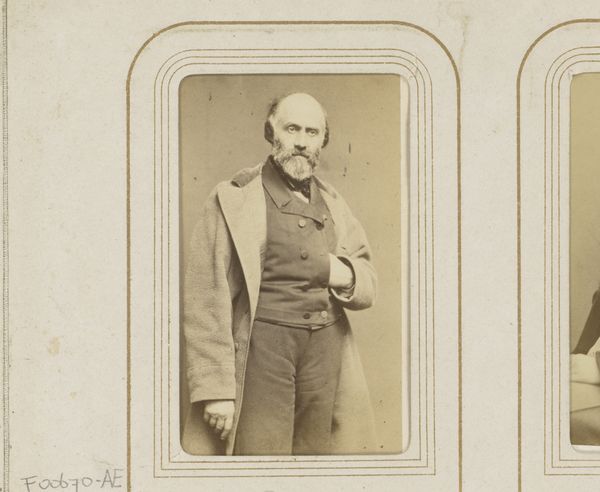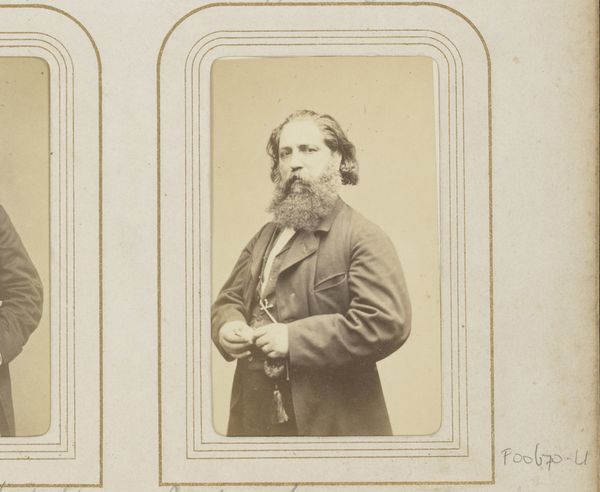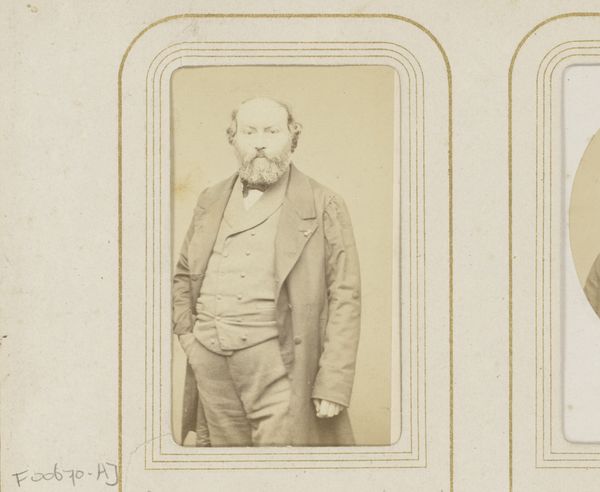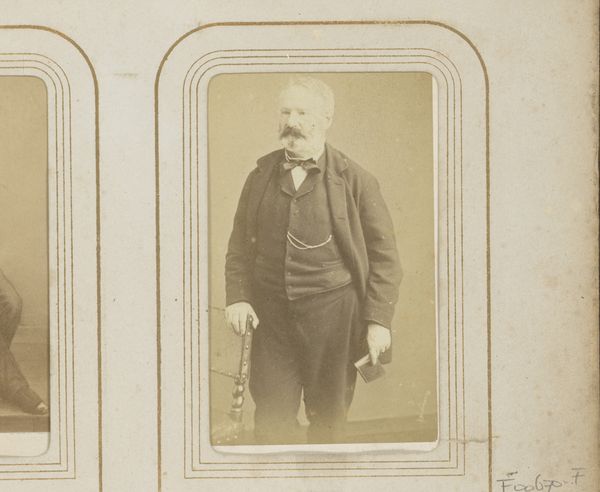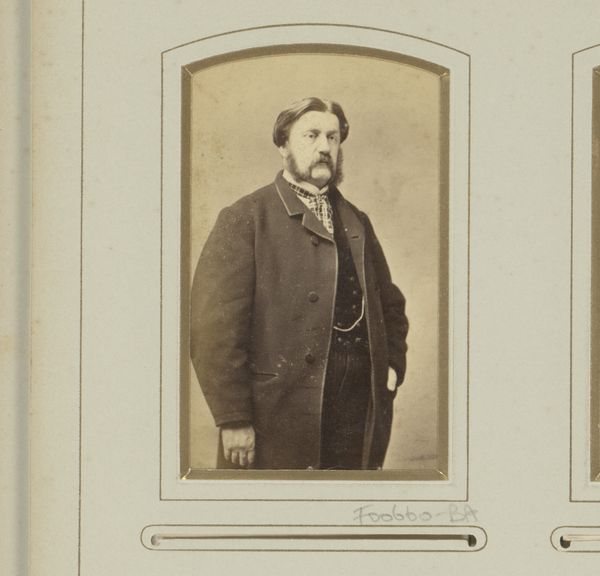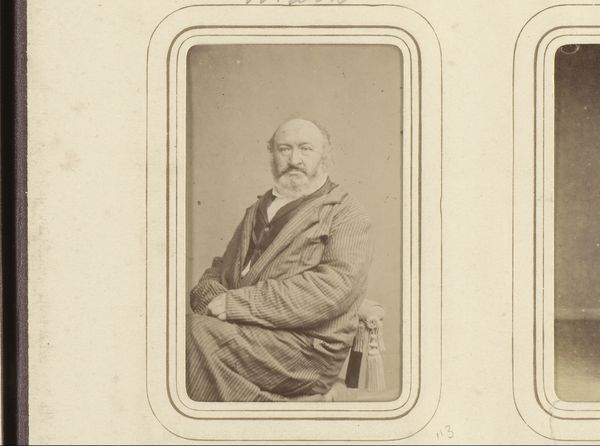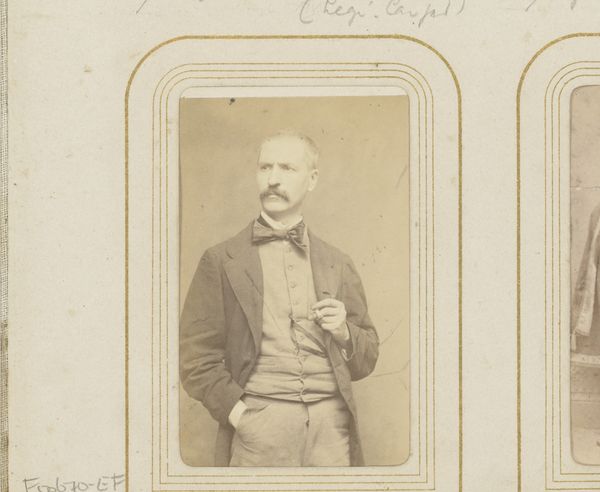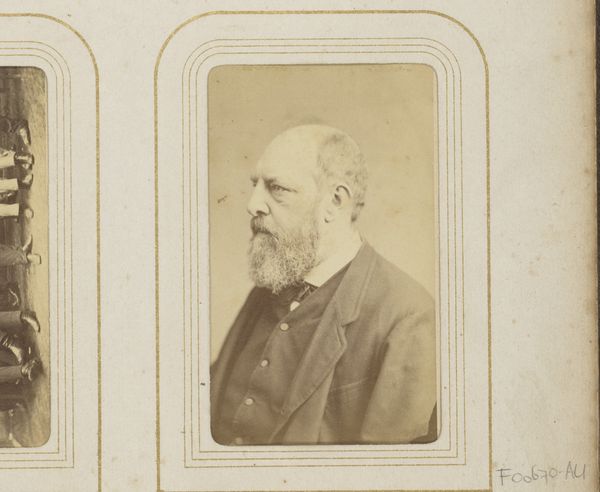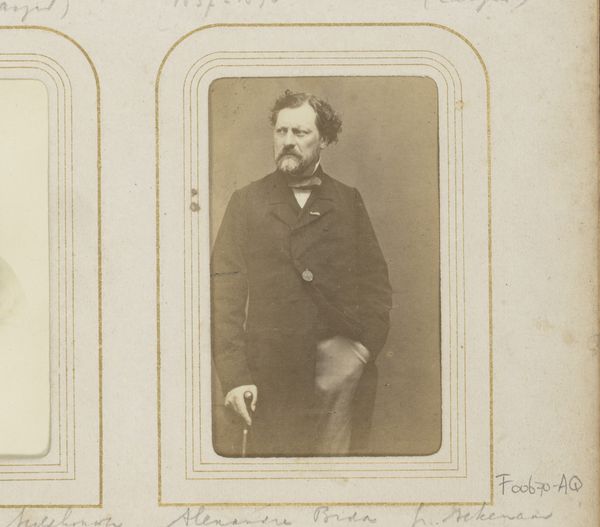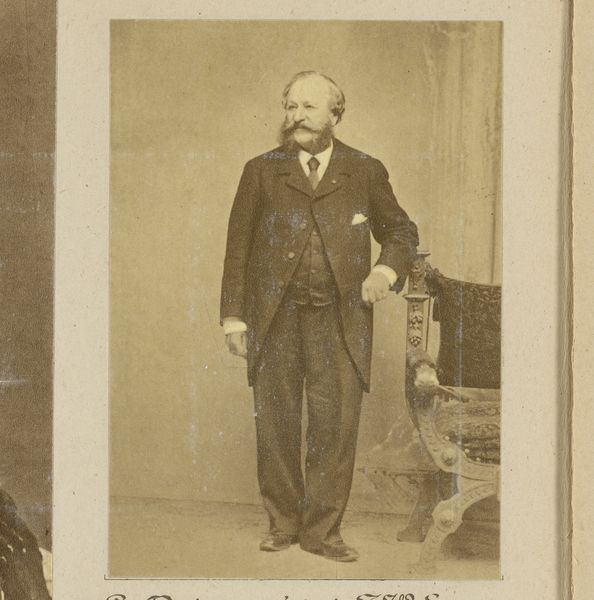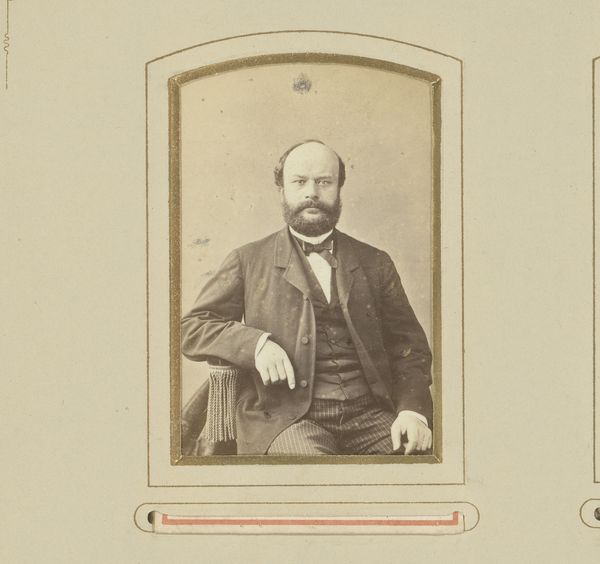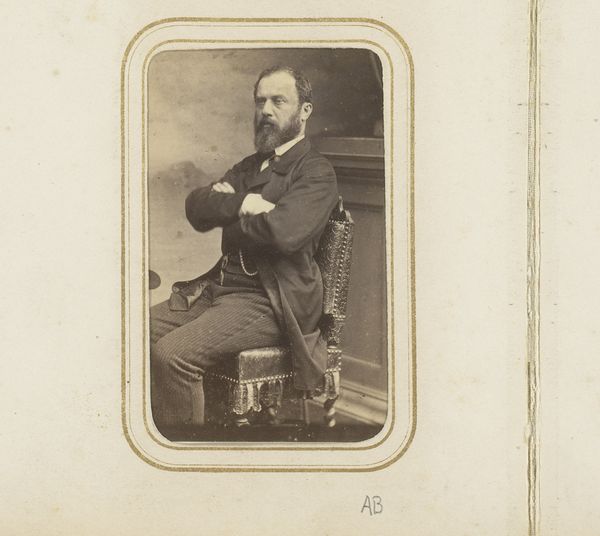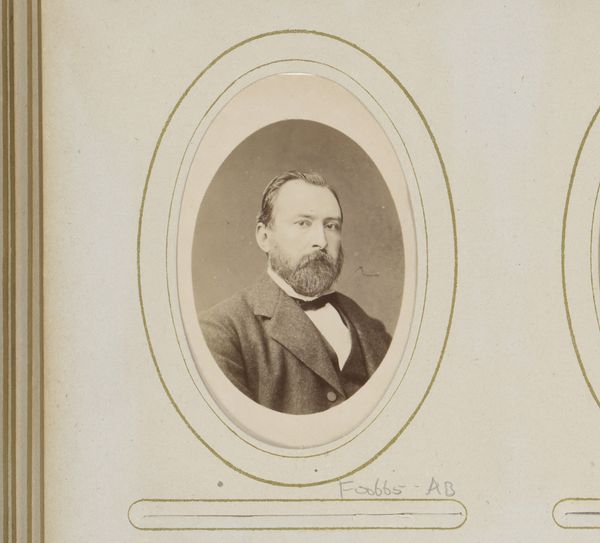
daguerreotype, photography
#
portrait
#
aged paper
#
toned paper
#
16_19th-century
#
vintage
#
photo restoration
#
colourisation
#
daguerreotype
#
archive photography
#
photography
#
historical photography
#
old-timey
#
yellow element
#
19th century
Dimensions: height 83 mm, width 51 mm
Copyright: Rijks Museum: Open Domain
Curator: Up next, we have a portrait of Paul Feval by Étienne Carjat, made sometime between 1861 and 1867. It's a daguerreotype. What are your first thoughts? Editor: Melancholy. It’s the first word that springs to mind. The muted tones, the sitter’s withdrawn expression... it evokes a certain fin-de-siècle weariness. Curator: That’s interesting because Carjat was a celebrated portrait photographer of his day, known for capturing the likenesses of prominent writers, artists, and politicians. He occupied a significant role in Parisian society. His images provided access, literally an image, for the middle class to participate in the growth of fame of these people. Editor: But there's a certain ambiguity, wouldn’t you agree? The soft focus lends an almost dreamlike quality. He’s staring straight ahead, he appears as this slightly world-weary figure but dressed for a certain rank in society with coat and tie. Perhaps, on the cusp of some existential revelation? Or he may be a simple intellectual with a pensive pose. Curator: The pose itself is significant. Carjat frequently placed his subjects in these thoughtful poses. Editor: It's carefully constructed, wouldn’t you agree? The slight turn of the head, the fall of light. What would be the role of theater or public image? It almost feels theatrical. The backdrop is so unadorned too and keeps drawing me back to his eyes. Curator: Indeed. What makes this work important is also about how these images circulated within broader social and political contexts. Daguerreotypes became a medium through which reputations were constructed and solidified. Editor: Yes, and it really underscores the lasting power of images to shape our perception of individuals and eras long after they've passed. Curator: Absolutely. Images such as these have helped shaped the canon of prominent french literary culture, of which Paul Feval played a central role. It remains on display at the Rijksmuseum. Editor: A quiet contemplation captured. And in that quiet, a doorway to another era.
Comments
No comments
Be the first to comment and join the conversation on the ultimate creative platform.
